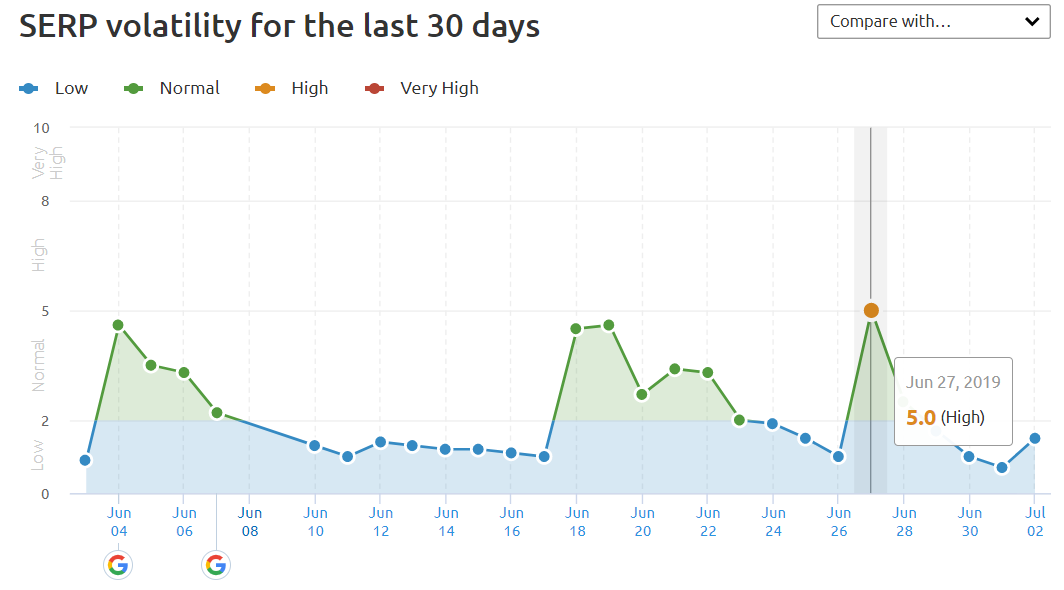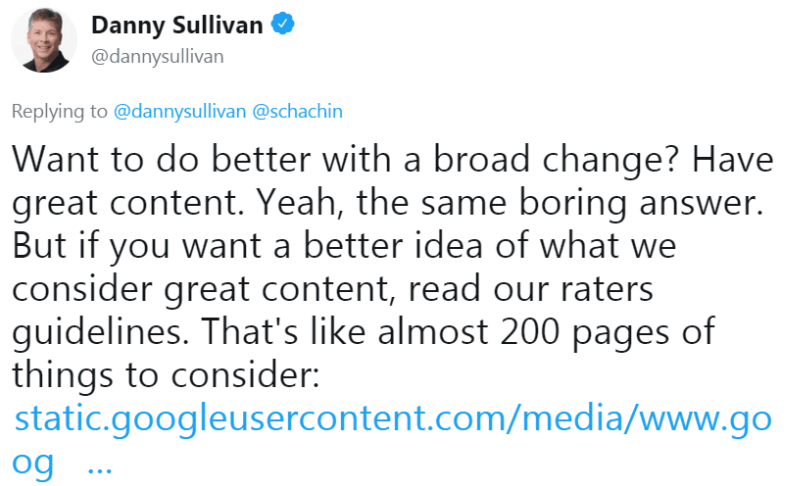July 8, 2019
| Article | by Bari Friedman Eisenberg | Search Engine Optimization
The State of Search: Implications of the June 2019 Core Update
A broad core Google algorithm update took place at the beginning of June, shortly after Google’s Quality Rater Guidelines were updated and republished. While minor tweaks to Google’s algorithm are made every day, major core updates only take place a few times per year, with the last occurring in March.
Aptly named the “June 2019 Core Update,” this update began rolling out on June 3rd and finished five days later, on June 8th. In comparison, previous core updates have taken several weeks to roll out completely.
The June 2019 Core Update is unique in that it took place concurrently with another Google algorithm update, the Diversity Update. The Diversity Update began on June 4th and finished on June 6th and was implemented by Google to prevent a single domain from dominating the search results for a single query—leading to more “diversity” in the search results.
With two updates taking place simultaneously, it has been challenging to analyze the full impact of the June 2019 Core Update. However, industry experts believe that if a site’s traffic was negatively impacted during this time, it is more likely attributed to the Core Update versus the Diversity Update. The Diversity Update did not appear to impact the traffic as significantly as predicted.
Despite Google’s preannouncement of this update and Google representatives indicating that it would bring “noticeable change”, our algorithm sensors did not pick up significant volatility during or immediately after the rollout of these two updates. Referring to the screenshot below, it wasn’t until June 27th that we saw more noticeable volatility that was comparable to a larger algorithm update.

Generally, the SEO community can identify the types of sites impacted by a major Google algorithm update within a week or two of its completion. In the case of the June 2019 Core Update, it has been challenging to pinpoint the types of sites that were impacted and how the algorithm has changed. As Google is likely still making tweaks to this update, it may be another few weeks until we can gather concrete conclusions.
However, based on the data we have collected from our client sites, the recent changes made to Google’s Quality Rater Guidelines (QRG), and the information shared within the SEO industry, we believe that the June 2019 Core Update may be a result of two factors. First, Google rolled back some aspects of the March 2019 Core Update. Second, Google also increased the importance of certain ranking factors that relate to, but are not limited to, page quality—such as trust and brand recognition.
We currently suspect the following factors:
- Scientific consensus – sites sharing information that contradicts scientific consensus (i.e. herbal remedies, alternative medicine) were demoted. In the QRG, Google tells its raters to give low ratings to sites sharing this type of information.
- Brand awareness – Google values sites that have good reputations and are well-recognized. The updated QRG emphasized that sites with brand recognition are considered “highly authoritative”.
- Ad experience – sites with ads or interstitials that overwhelm and or disrupt a user’s experience likely experienced drops after this update.
- Site speed – as page load time directly impacts user experience (UX), we suspect that Google may be placing an even stronger emphasis on UX signals such as site speed with this update. One site that we investigated following this update experienced a large drop in its organic search presence (see the screenshot below). Upon closer analysis, we found that the site demonstrated E-A-T well but scored very low in Google’s Page Speed Insights tool. Given the timing, we suspect it may be related to the update.

- Emphasis on trust – the sites that experienced major drops after this update likely lack in trust (the “T” in E-A-T)—as outlined in the updated QRG. The findings shared with the industry along with the changes made to the QRG regarding what Google considers to be signs of “low trust” lead us to believe that Google is becoming more sophisticated at evaluating “trust”.
It is important to note that this was a broad core algorithm update and search marketers should consider ranking factors that extend beyond page quality and E-A-T when analyzing changes and evaluating their potential impact.
Next Steps
With any Google algorithm update, it is best to avoid making significant changes to a site until we can gather more information and understand the residual, more lasting effect of the update. During this time, we recommend closely monitoring organic traffic and keyword rankings of both client and competitor sites for major changes.
At REQ, our search programs involve strategies that adhere to the guidelines set by Google, making them more resistant to algorithm updates like this one. Our search strategies ultimately reinforce the rules that Google has already set. Per Google’s recommendation, our focus will continue to be on producing quality content, as outlined in the QRG, and providing visitors with the best possible user experience.

We will also conduct thorough site quality reviews in search of opportunities to further improve E-A-T signals—especially those pertaining to trust. If the June 2019 Core Update is, in fact, a quality update, many quality improvements will need to be implemented for a site to recover.
Wondering where to start?
We recommend reviewing Google’s QRG and asking yourself the 23 questions listed in Amit Singhal’s 2011 Google Webmaster blog post, More Guidance on Building High Quality Sites—as John Mueller, Webmaster Trends Analyst at Google, suggested during a recent Google Hangout, last month.